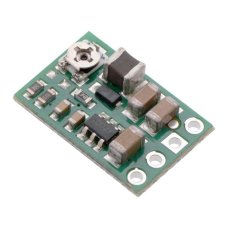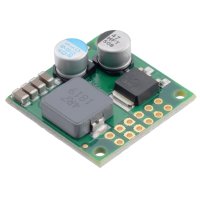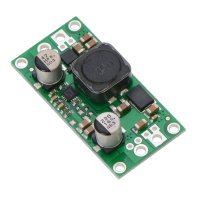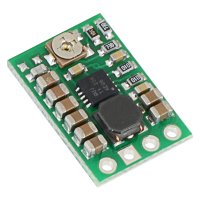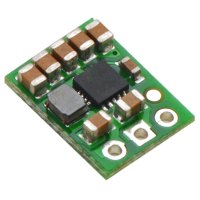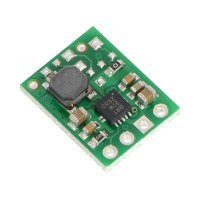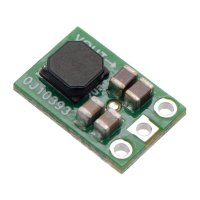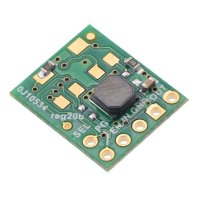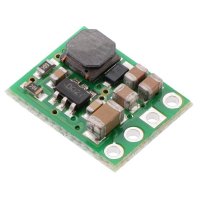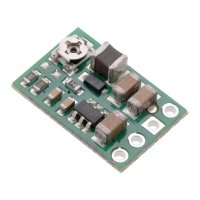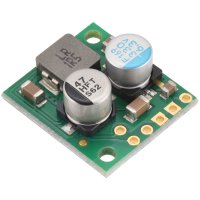This compact (0.4″ × 0.5″) switching step-down (or buck) voltage regulator takes input voltages between 4 V and 50 V and efficiently reduces them to user-adjustable voltage set by an on-board trimmer potentiometer while allowing for a maximum output current of 600 mA. For adjustable versions It has an output voltage range of 2.5 V to 7.5 V or 4 V to 25 V . It has a very low dropout, so it can be used with input voltages that are within a few hundred millivolts of its output. The pins have a 0.1″ spacing, making this board compatible with standard solderless breadboards and perfboards.
| Adjustable 2.5-7.5 V | Adjustable 4-25 V | |
| Input voltage | 4-50 V | 4-50 V |
| Output voltage( with 4% accuracy) | adjustable from 2.5 V to 7.5 V by on-board trimmer potentiometer | adjustable from 4 V to 25 V by on-board trimmer potentiometer |
| Low quiescent current (mA) | < 2 | < 2 |
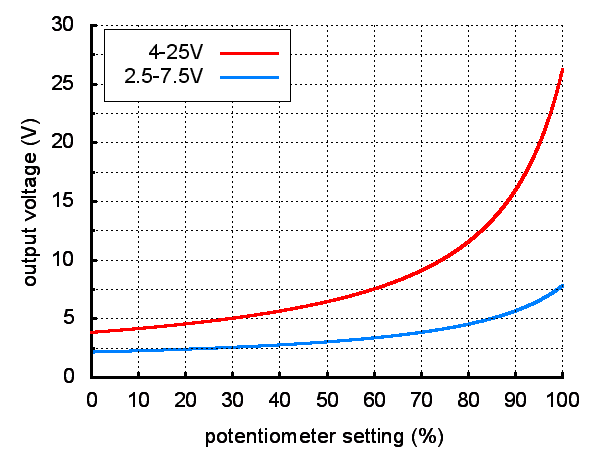
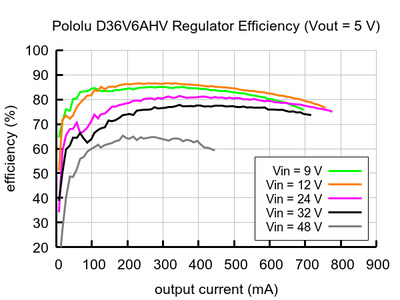

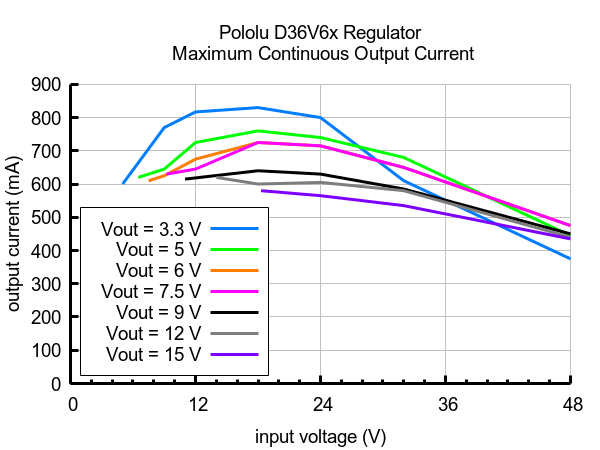
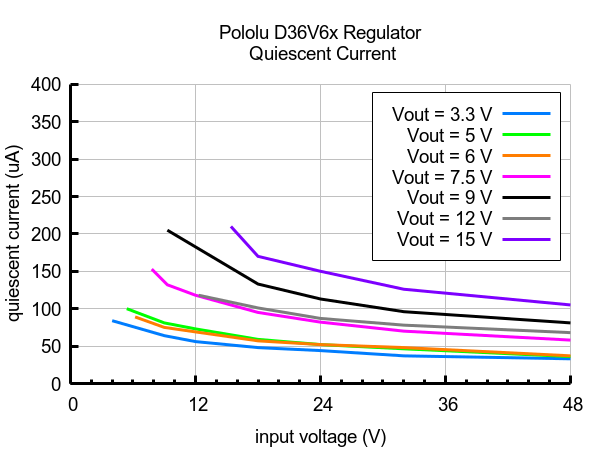

| Adjustable 4-25 V |
Pololu 3798/3799 600mA Step-Down Voltage Regulator D36V6 ALV/ AHV
- Brand: Pololu
- Product Code: Pololu-Voltage-Regulator-D36V6Ax
- Reward Points: 6
- Availability: In Stock
- रo 628.00
-
रo 602.00
- Price in reward points: 628
-
- 25 or more रo 600.00
- 96 or more रo 573.00
- 250 or more रo 553.00
Available Options
Related Products
Pololu 4090/4091/4092/4093/4094/4095 Step-Down Voltage Regulator D36V50Fx
The D36V50Fx family of buck (step-down) voltage regulators generates lower output voltages from inpu..
रo 2,271.00 रo 2,365.00
Pololu 2574/2575/2576/2577/2572/2573 5V/ 6V/ 9V/ 12V/ 4-12V/ 9-30V Step-Up/Step-Down Voltage Regulator S18V20F5/ 6/ 9/ 12/ ALV/ AHV
This powerful S18V20F5 S18V20F6 S18V20F9 S18V20F12 step-up/step-down regulator efficiently produces ..
रo 2,047.00 रo 2,031.00
Pololu 2122 3.3V Step-Up/Step-Down Voltage Regulator S7V8F3
The S7V8F3 switching step-up/step-down regulator efficiently produces a fixed 3.3 V output from inpu..
रo 602.00 रo 628.00
Pololu 2123 5V Step-Up/Step-Down Voltage Regulator S7V8F5
The S7V8F5 switching step-up/step-down regulator efficiently produces a fixed 5 V output from input ..
रo 602.00 रo 628.00
Pololu 2119 5V Step-Up/Step-Down Voltage Regulator S7V7F5
The S7V7F5 switching step-up/step-down regulator efficiently produces 5 V from input voltages betwee..
रo 527.00 रo 549.00
Pololu 2561/2562 3.3/ 5V Step-Up Voltage Regulator U1V11F3/ U1V11F5
This compact (0.45″×0.6″) U1V11F3/ U1V11F5 switching step-up (or boost) voltage regulator efficientl..
रo 602.00 रo 628.00
Pololu 2836 5V Step-Up/Step-Down Voltage Regulator S9V11F5
The S9V11F5 switching step-up/step-down regulator efficiently produces 5 V from input voltages betwe..
रo 679.00 रo 707.00
Pololu 2873 / 2872 / 2871 / 2870 / 2836 / 2868 / 2869 5V/3.3V/2.5V Step-Up/Step-Down Voltage Regulator w/ Fixed 3V Low-Voltage Cutoff S9V11F5S6CMA/ F5/ F3S5C3/ F3S5/ F3S5CMA/ 5S6CMA/ MACMA
The S9V11x family of efficient switching regulators (also called switched-mode power supplies (SMPS)..
रo 602.00 रo 628.00
Pololu 3791/3792/3793/3794/3795/3796/3797 600mA Step-Down Voltage Regulator D36V6 F3/ F5/ F6 /F7/ F9/ F12/ F15
This compact (0.4″ × 0.5″) switching step-down (or buck) voltage regulator takes input voltages betw..
रo 451.00 रo 470.00
Pololu 3798/3799 600mA Step-Down Voltage Regulator D36V6 ALV/ AHV
This compact (0.4″ × 0.5″) switching step-down (or buck) voltage regulator takes input voltages betw..
रo 602.00 रo 628.00
Pololu 4891/4892/4893/4894/4895/4896/4897 3.3V/5V/6V/7.5V/9V/12V/15V Step-Down Voltage Regulator D30V30F3/F5/F6/F7/F9/F12/F15
The D30V30Fx family of buck (step-down) voltage regulators generates lower output voltages from inpu..
रo 1,209.00 रo 1,259.00
Tags: Pololu 3798 3799 600mA Step-Down Voltage Regulator D36V6ALV, D36V6AHV

